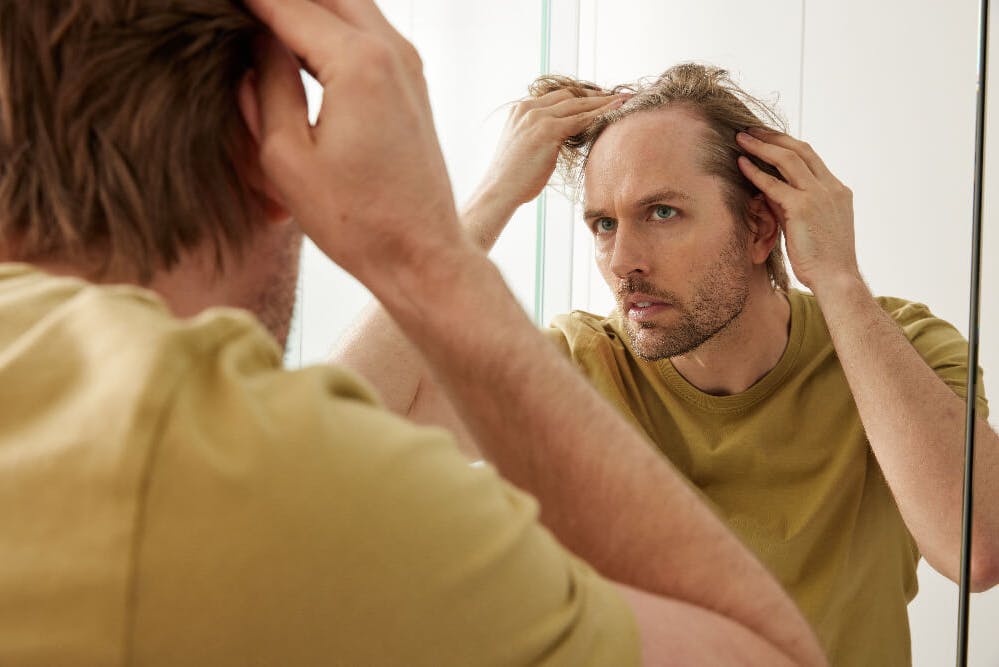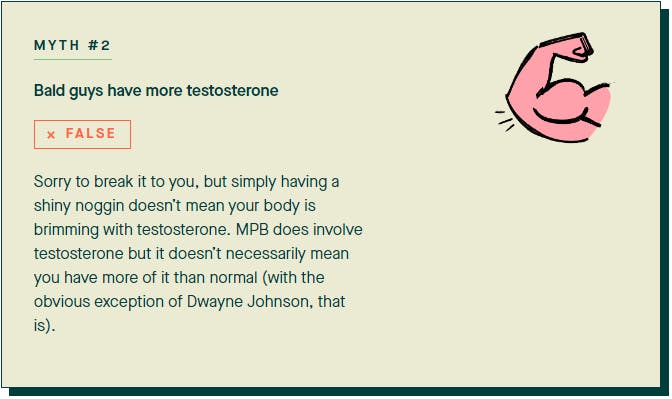Hair growth phases; the science part explained
Growth Phase (Anagen)
This is the active phase of hair growth, where 85-90% of hairs are growing at any given time, lasting up to seven years.
Transitional Phase (Catagen)
Hair growth slows as follicles shrink over a few weeks. Approximately 3% of hairs are in this phase.
Resting Phase (Telogen)
The hair follicle is at rest and not growing. Around 6%-8% of hair is in this phase, lasting a few months.
Shedding Phase (Exogen)
At the end of the resting phase, hair gradually detaches from the follicle and falls out. The average person sheds between 50-100 hairs daily. After exogen, old hair is replaced with new hair in the anagen phase, restarting the cycle. Disruptions in this cycle can lead to hair loss.[4]
What are the causes of hair loss?
Testosterone and DHT - The Major Culprits of MPB
Testosterone is converted to dihydrotestosterone (DHT) in the body by the enzyme 5-alpha reductase. DHT affects various organs, including hair follicles.[5] Hair loss is not directly caused by DHT production but rather by an inherited sensitivity to DHT. Individuals with a high genetic sensitivity to DHT are more prone to hair follicle weakening.[6] DHT shrinks hair follicles and shortens the hair growth cycle, resulting in thinner, more brittle hair that falls out faster.[7] It also delays the growth of new hairs after old ones fall out. Certain behaviours, such as using creatine supplements, resistance and weight training, or taking anabolic steroids, can increase DHT levels and exacerbate hair loss.[8]
Ageing
Hair thinning is a natural aspect of ageing, known as involutional alopecia, where hormonal changes slow hair growth and reduce the number of hair strands. This process affects both men and women, with women often experiencing it after menopause.[9]
Chronic Stress
During periods of chronic stress or trauma, temporary hair loss, termed telogen effluvium, can occur.[10]
Certain medications and illnesses
Some medications and illnesses can lead to hair loss. Common medications for conditions like acne, high cholesterol, and depression may have rare side effects such as hair loss.[11] Illnesses such as thyroid disorders, eating disorders, iron deficiency anaemia, diabetes, autoimmune diseases, and skin conditions like psoriasis and dermatitis can also cause hair loss.[12]
Diagnosing male pattern baldness
Male pattern baldness (MPB), primarily genetic, affects up to 95% of men with thinning hair and leads to permanent loss if untreated.
Signs of MPB include:
- Noticeable change in hairline.
- Increased hair shedding.
- Thinning hair, starting at the crown or spread across the scalp.
- Delayed, wispy regrowth due to DHT sensitivity causing hair follicle miniaturisation.[13]


